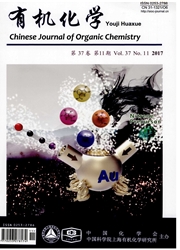

 中文摘要:
中文摘要:
锌离子在生物体的大脑活动、基因转录和免疫功能等生理、病理过程中扮演着重要角色,选择性识别和检测锌离子具有十分重要的生物学意义.荧光检测法在选择性、灵敏度、实时原位监测等方面具有独特的优势,应用荧光法检测胞内Zn2+是近年来研究热点之一.文中按照三种不同的荧光作用机制(光诱导电子转移、分子内电荷转移和荧光能量共振转移)进行分类和总结,介绍了近10年来锌离子荧光分子探针的研究进展,概述了各类型重要荧光探针的设计、性能及其生物应用,评述了探针的结构和检测性能之间的关系,最后展望了锌离子荧光探针的发展趋势和应用前景.
 英文摘要:
英文摘要:
Zinc ion (Zn2+) plays an essential role in many physiological processes of the organism, such as brain activities, gene transcription and immune function, as well as some pathological processes and so on, therefore selective recognition and detection of Zn2+ are of important biological significance. Fluorescence technology has unique advantages such as high selectivity, sensitivity, low cost, real-time and in situ monitoring, thus it has become one of the most important sensing technologies for zinc ion and a hot topic area in recent years to imaging Zn2+ in cells. Herein, the latest progresses in the last 10 years of fluorescent molecular probes based on the small molecules for Zn2+ are reviewed. These important fluorescent probes are classified according to three different mechanisms action (PET, ICT and FRET). The designs of molecular structure, sensing mechanism and biological applications of these probes are introduced. In addition, the structure and property relationships are elucidated. Finally, the problems and the developing trends in this field are also discussed.
 同期刊论文项目
同期刊论文项目
 同项目期刊论文
同项目期刊论文
 Identification of a boroncontaining intermediate in the boron tribromide mediated aryl propargyl eth
Identification of a boroncontaining intermediate in the boron tribromide mediated aryl propargyl eth Design, synthesis, and biological evaluation of 4-(5-dimethylamino-naphthalene-1-sulfon-amido)-3-(4-
Design, synthesis, and biological evaluation of 4-(5-dimethylamino-naphthalene-1-sulfon-amido)-3-(4- 期刊信息
期刊信息
